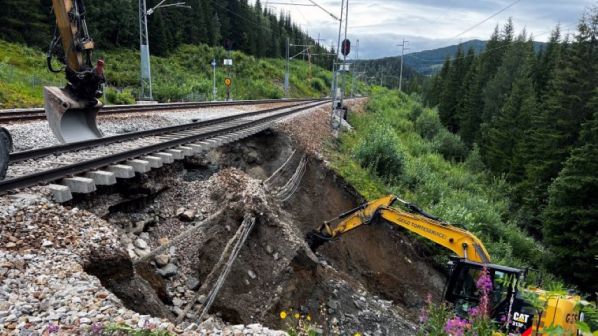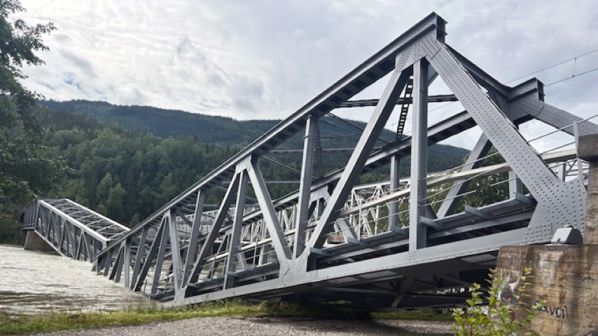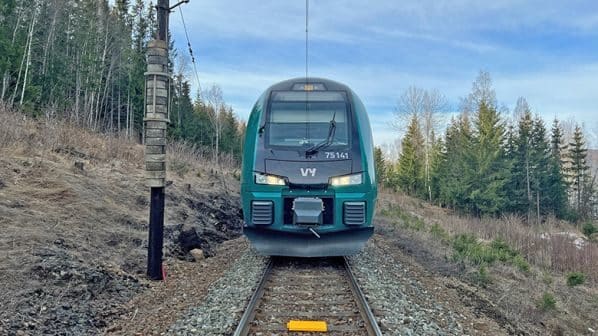THE Norwegian Railway Directorate says that the damage caused by extreme weather earlier this month will have lasting consequences for the Dovrebanen main line that connects Oslo and Trondheim, and that it will be a long time before train operations can return to normal.
What the directorate describes as “enormous” amounts of rainfall caused extensive damage to the national network, including landslides and washouts in many locations.
The most serious incident was the collapse on August 14 of the 172m-long Randklev bridge over the Gudbrandsdalslågen river at Ringebu on the Dovrebanen, when two spans fell into the river after a bridge pier was washed out.
The directorate says it is now working closely with infrastructure manager Bane Nor and operators to identify the best solutions for maintaining passenger and freight services between eastern Norway, the Trondheim region and northern Norway.
As many trains as possible will have to be diverted over the non-electrified Røros line between Hamar and Trondheim, with SJ operating two passenger services in each direction between Oslo and Trondheim over this route until further notice.
The directorate says that freight operators CargoNet and OnRail have recently brought into service hybrid locomotives that will enable them to operate over the non-electrified Røros line.

With the exception of the Dovrebanen, the directorate says that traffic has now resumed on all flood-damaged sections of the network, thanks to the efforts of Bane Nor and its contractors.
Work to reopen the Bergen line was undertaken at a number of locations between Hønefoss and Geilo where landslides and other ground movement damaged the formation.
Capacity through Eidsvoll between Oslo and Hamar has been reduced as temporary speed restrictions remain in place due to flood damage.
The Gjøvik line remains closed due to planned works, which have been extended by five days to August 25 as a result of the damage caused by extreme weather.




